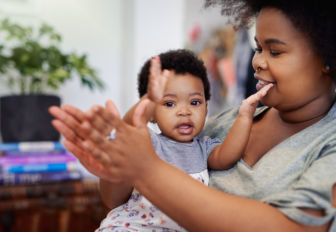In the New York Times article “Don’t Expect a Quarantine Baby Boom,” the idea that shelter in place orders due to the COVID-19 pandemic will lead to an increase in birth rates is disparaged. Demographers view the current climate as one that most people agree is not an ideal time to have a child. They note that there is a lot of fear surrounding COVID-19, as well as economic uncertainty for the country and continued challenges with unemployment or job security for individuals. This is the opposite of the environment that led to the historically noted Baby Boom that took place from 1946 to 1964 (1). Baby booms were also seen after the 1965 New York City blackout, Hurricane Sandy (2) and the Cubs 2017 World Series Win (3). Both the post-war and World Series baby booms occurred during a time of excitement and celebration. While Hurricane Sandy and the blackout of New York City did not present people with a reason to celebrate, the stability of the economy was not conceptually threatened in the long term. This is a notable difference from the economic forecast today; economic recovery from COVID-19 seems to be a long and uncertain process.
With no cause for celebration and potentially daunting economic future for the United States, it is possible that people may be less sexually active during this time. Forty-eight percent of Americans polled about their sex life during the COVID-19 pandemic stated that their sex life during the COVID-19 pandemic stated that their sex life has been stunted by the pandemic (4). This trend has been seen previously as well: after the 1918 influenza pandemic, a 10% decrease in birth rates was recorded. If people are having less sex, a lower birth rate is a logical conclusion (5). However, the NBC poll found that less than half of those polled are experiencing less sex due to the pandemic (4).
The low potential for a baby boom this winter, as compared to other times, is also a result of better contraception. When looking back at previous baby booms, particularly those in the 1900s, it is important to also look back to the history of contraceptive use. The first oral contraceptive pill was not approved by the FDA until 1960, and it was not until 1965 that 25% of women under 45 began using the pill (6). Today, contraceptive use is much more widespread. At least 60% of all women of reproductive age currently use a form of contraception (7). The uptake of contraception has led to a decrease in teen pregnancies across the United States, which is another birth rate change catalyzed by increased access to, and usage of, contraception; birth control decreases the chance of unintended pregnancy, showing favor to the notion that a baby boom as a result of COVID-19 is not as likely as the baby booms seen between 1946-1965.
While contraceptive access can be tracked historically, people’s access to their partners is not as easy to follow. Those that cohabitate have always shown increased risk for unintended pregnancy (8), and there is no immediate reason to believe that this will change. However, for people that do not live with their partners, the pandemic may pose new challenges for seeing each other. If two people do not see each other in person, there is no risk for pregnancy amongst them. The New York City blackout of 1965 and Hurricane Sandy most likely presented similar challenges for partners not cohabitating, but those events did not last for the amount of time that the COVID-19 pandemic is predicted to. With no certainty in the pandemic’s timeline, it is understandable that people may choose to not risk COVID-19 exposure by seeking out close contact with people that are not already in their household. Both increased access to contraceptives and decreased access to sexual partners will most likely play roles in the lack of a baby boom in the near future.
PICCK Resources:
How to Access Birth Control Without an In-Person Visit
Bridge Methods of Contraception
Telemedicine Best Practices and Considerations
References:
- Yuhas A. Don’t Expect a Quarantine Baby Boom. The New York Times. https://www.nytimes.com/2020/04/08/us/coronavirus-baby-boom.html?auth=link-dismiss-google1tap. Published April 8, 2020. Accessed May 8, 2020.
- Subramanian C. A Hurricane Sandy Baby Boom? Time. https://newsfeed.time.com/2013/03/04/a-hurricane-sandy-baby-boom/. Published March 4, 2013. Accessed May 20, 2020.
- Eltagouri M. A Cubs World Series Baby Boom? Some parents and hospitrals think so. 2017. https://www.chicagotribune.com/news/breaking/ct-cubs-world-series-baby-boom-met-20170726-story.html. July 26, 2017. Accessed May 19, 2020.
- Zucker J. Health, sex, and the coronavirus: How does sexual intimacy change durng a pandmeic? NBC News. https://www.nbcnews.com/think/opinion/health-sex-coronavirus-how-does-sexual-intimacy-change-during-pandemic-ncna1169811. Published March 28, 2020. Accessed July 8, 2020.
- Gunter J. Sex and the Coronanvirus: Reader Questions, Answered. The New York Times. https://www.nytimes.com/2020/04/10/style/coronavirus-sex-pregnancy-questions.html. Published April 10, 2020. Accessed July 2, 2020.
- The Birth Control Pill A History. Planned Parenthood Federation of America. https://www.plannedparenthood.org/files/1514/3518/7100/Pill_History_FactSheet.pdf. Published June 2015. Accessed July 13, 2020.
- Contraceptive Use in the United States. Guttmacher Institute. https://www.guttmacher.org/fact-sheet/contraceptive-use-united-states?gclid=EAIaIQobChMIosSKjrXK6gIVT_DACh23sAcmEAAYASAAEgJ8UfD_BwE#. Published April 2020. Accessed July 13, 2020.
- Unintended Pregnancy in the United States. Guttmacher Institute. https://www.guttmacher.org/fact-sheet/unintended-pregnancy-united-states#. Published January 2019. Accessed May 20, 2020.


